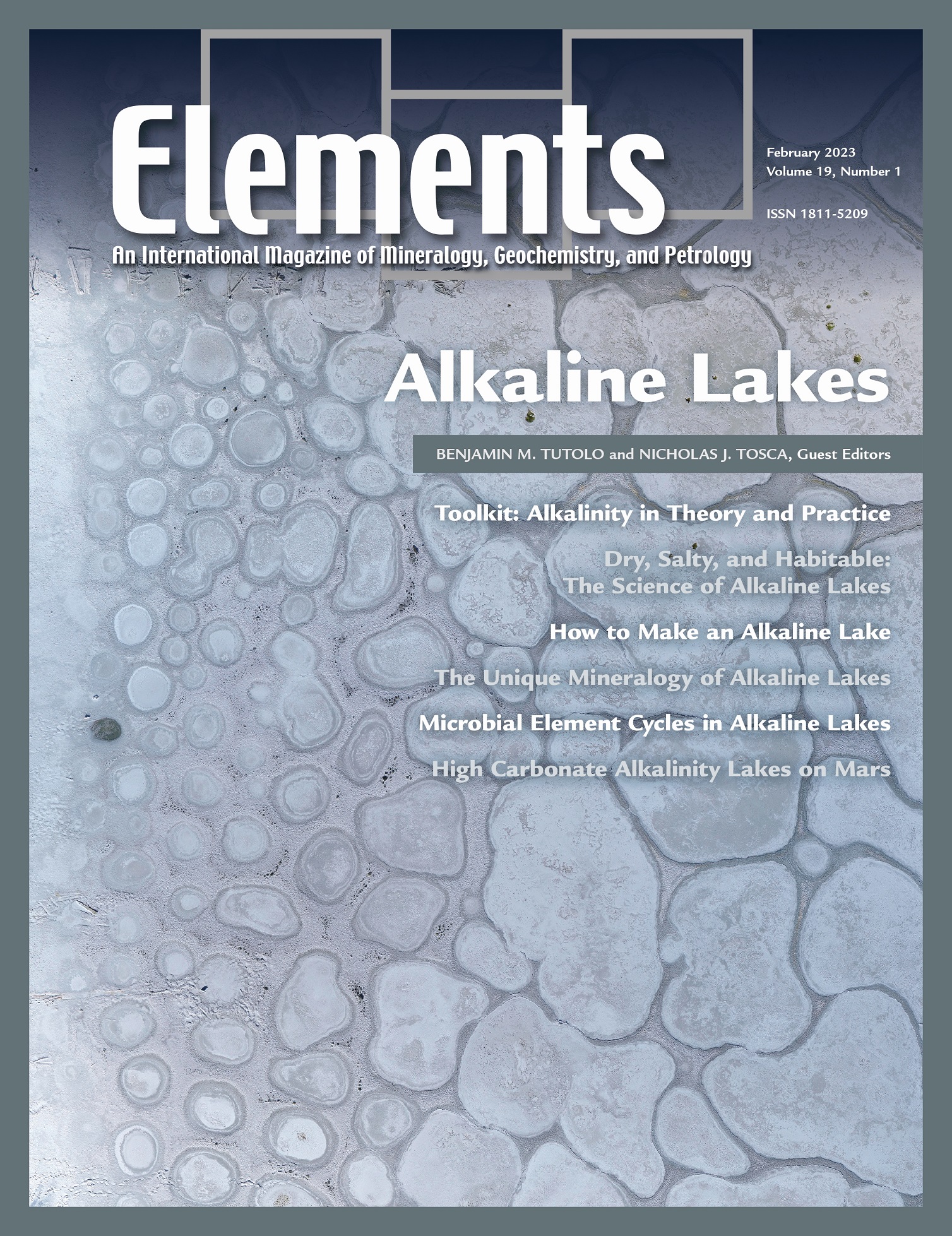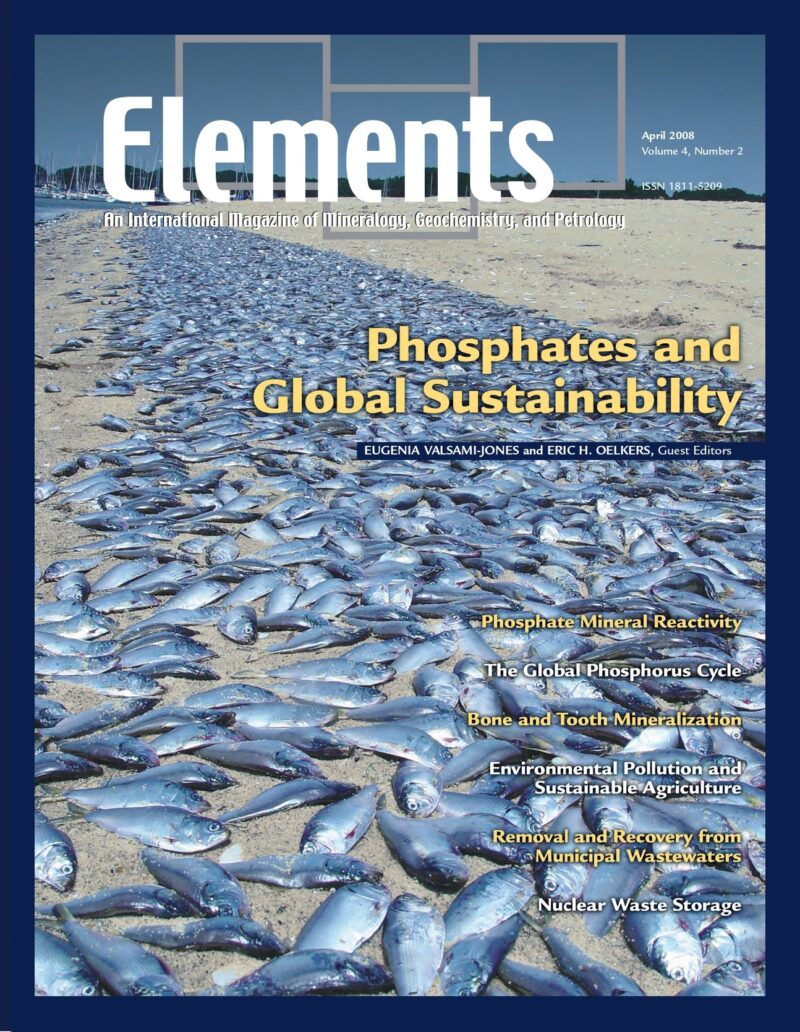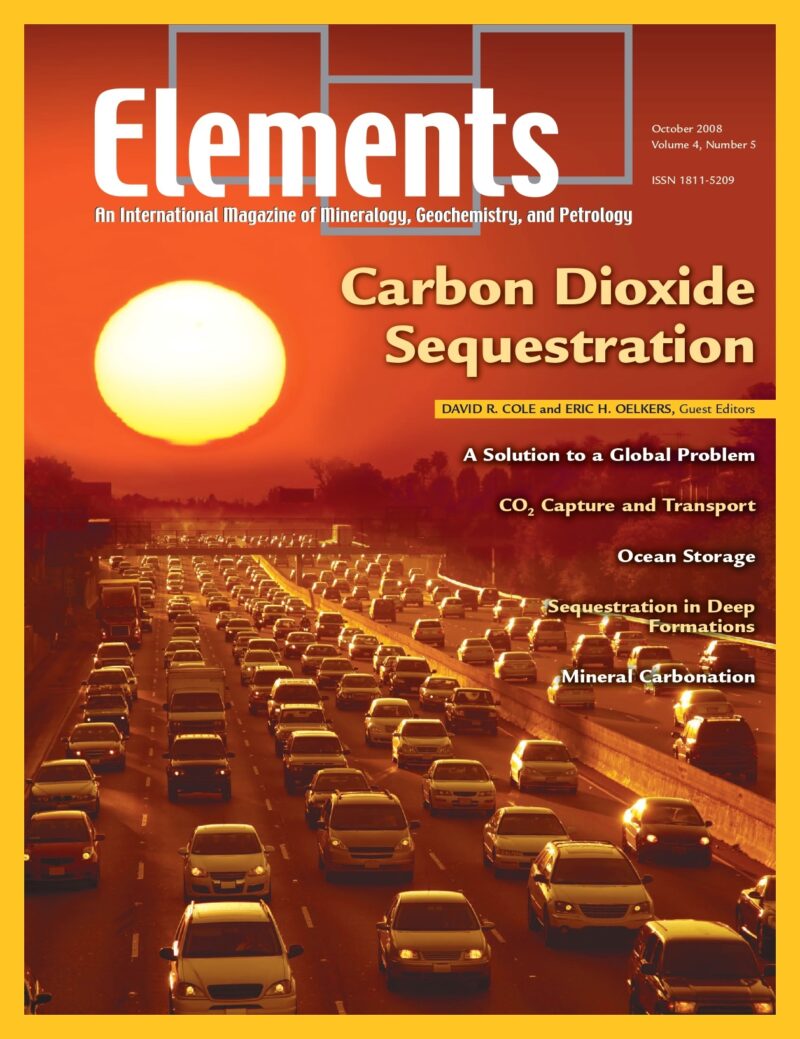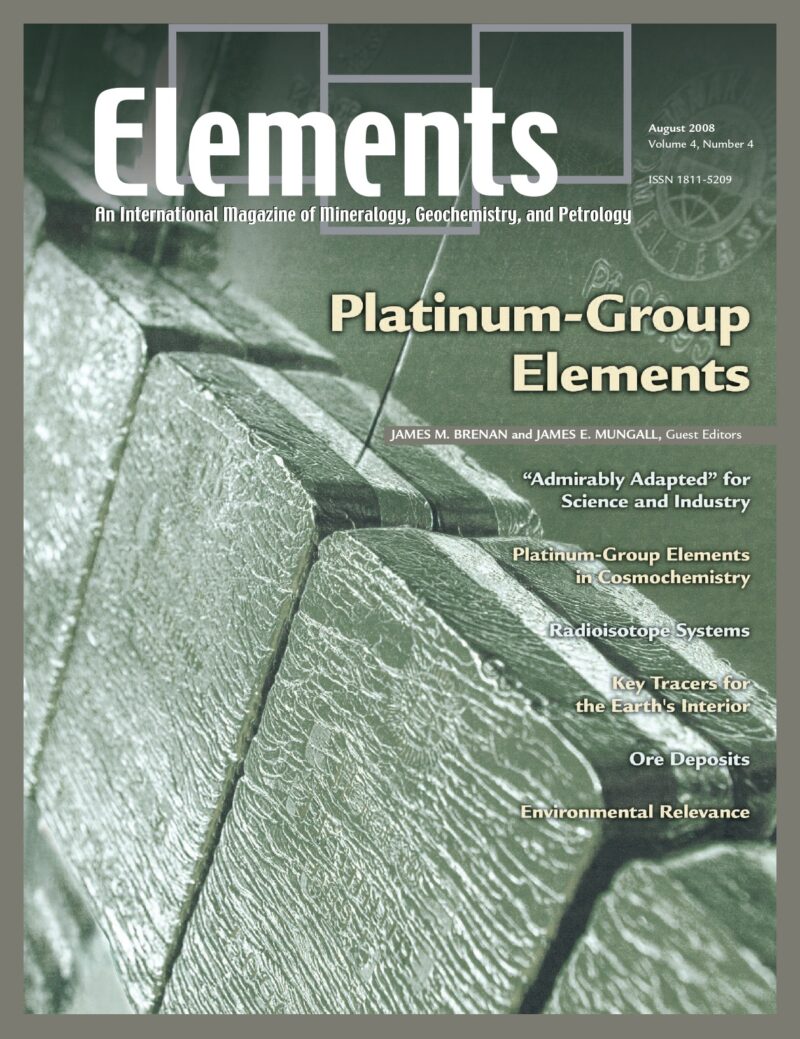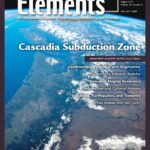
Cascadia Subduction Zone, August 2022, Vol. 18, No. 4
June 28, 2024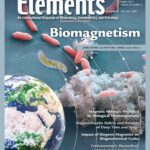
Biomagnetism, August 2023, Vol. 19, No. 4
June 28, 2024Alkaline Lakes, February 2023, Vol. 19, No. 1
$20.00
Alkaline lakes are incredibly dynamic, unique, and fascinating biogeochemical environments. This thematic issue leverages the authors’ multidisciplinary insights to portray alkaline lakes’ biogeochemical, mineralogical, and geological importance for both science and society.
Alkaline Lakes
February 2023, Vol. 19, No. 1
Alkaline lakes are incredibly dynamic, unique, and fascinating biogeochemical environments. This thematic issue leverages the authors’ multidisciplinary insights to portray alkaline lakes’ biogeochemical, mineralogical, and geological importance for both science and society. The articles individually explore the unique conditions leading to the formation of alkaline lakes, the distinctively productive microbial ecosystems that inhabit them, their distinguishing chemistry and mineralogy, their role as societally important economic resources, and their potential to have originated life on Earth as well as Mars. This approachable overview of the geochemical, biological, and societal aspects of alkaline lakes establishes their vital importance to the broad readership of Elements and stimulates continued explorations of these mesmerizing geological systems.
Why You’ll Love Elements Magazine:
- Expert Contributors: Articles written by renowned researchers in the field of geoscience.
- Engaging Content: Join a community of readers who are passionate about Elements.
- Exceptional Quality: Each issue is printed on high-quality paper with stunning visuals and detailed illustrations that bring complex scientific concepts to life.
Order your copy of the February 2023 issue of Elements magazine today and explore alkaline lakes.
Related products
-
Phosphates And Global Sustainability, April 2008, Vol. 4, No. 2
$20.00Phosphorus is a unique element: it is essential to the existence of all living forms, and as such controls biological productivity in many terrestrial and marine environments; but when in excess, it leads to uncontrollable biological growth and water-quality problems. This has become a common environmental issue, resulting from our careless use of phosphorus in agriculture, yet phosphate ore deposits, from which fertilizers are produced, are a finite natural resource.
-
Carbon Dioxide Sequestration, October 2008, Vol. 4, No. 5
$20.00Storage of carbon in the subsurface involves introduction of supercritical CO2 into rock formations beneath the surface of the Earth, typically at depths of 1000 to 4000 meters. Although CO2 is a relatively benign substance, the volume being considered is large.
-
Platinum-Group Elements, August 2008, Vol. 4, No. 4
$20.00The geoscientific and economic significance of the PGE is immense. Due to their extreme siderophile and chalcophile behaviour, the PGE are highly sensitive tracers of geological processes involving metal and sulfide phases.

